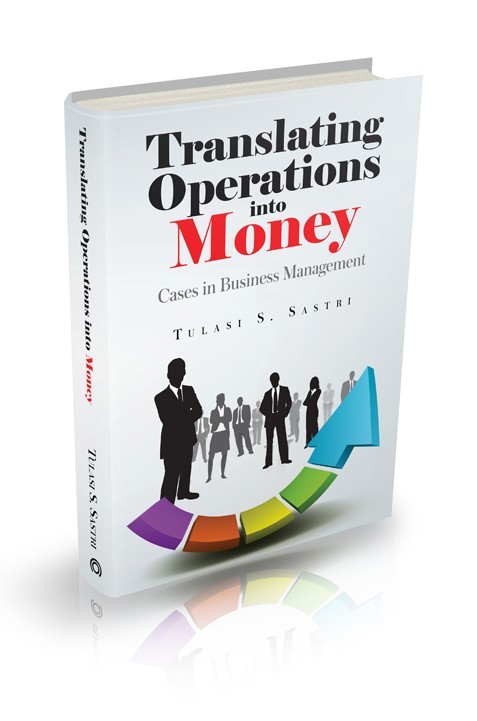After working for close to 4 decades in the Indian Industry, when I look back, I see a sea change in the environment, expectations, opportunities and risks associated with the Accountant’s role, over this period. Boundaries within which, the Accountant used to operate have practically disappeared, and sky is the limit for him / her, to add value to their employer organizations, today. I am referring to the developments in Information Technology, which has been the main contributor in making this happen.
I like to share my thoughts on some of the key issues, primarily for the benefit of young fellow professionals. Awareness is good enough to help them orient better, to face challenges, and in their pursuit of rewarding careers.
In the seventies and prior, the Accountant used to operate in a manual environment. In large and medium enterprises, substantial part of time and resources were deployed in book keeping activities and for Financial Reporting, with hardly any energy left for analytical efforts, beyond offering explanation to the accounting numbers. This was perceived by many Accountants as their role, and the boundary of books and compliances were at the back of their mind, all the time. For the same reason, Business Managers did not place any expectations on their accounting colleagues, even though accounts contained most authentic information, generated through the primary processes of book-keeping, earning the title of “bean counters” for the accountants. Analytical information, generated through secondary processes, to help in performance improvements in the organization was practically non-existent, in the manual environment.
Entry of computers in business started in large organizations first, which saw saving in manual efforts as the most significant advantage for deploying computers in their accounting and related applications. Inventory and Payroll were the most common applications with which they started, and it extended to Financial Accounting. All these applications were typically running in a batch processing mode, meaning bunching up transactions for a month and generating the required outputs. This meant that information was available, only after a month’s inputs were processed, and not when transactions were taking place. This was because those computers were capable of reading records, only in a sequential mode. What it meant was that if the computer required to access the 100th record in a file, it had to read and skip 99 records to reach the 100th record. Invention of “Floppy Drive” according to me was a very significant development, which enabled the computer to access any record it wanted, directly, enabling online applications. This had significantly enhanced the scope for employing computers in business.
Living in their comfort zone, some Accountants who were old timers, perceived computers to be a threat to their role. In an organization, where I was in the role of an Analyst, during those times, after obtaining the trial balance, when I proposed to our Controller, that we could generate the P&L and Balance Sheet as well, from the computer, his immediate reaction was “what will all these accountants do?”
Main Frames to Mini Computers to PCs, cost of computing progressively came down, and computers entered all business organizations, big and small, at a rapid pace. The Accountant’s manual environment has been replaced by computerized environment.
Batch to online to integrated applications forced accountants to come out of the boundary of books, and to think of relating Financial Applications to Business objectives.
Let us take a simple example to see how this is feasible.
Starting with the organizational objective of improving the Return on Investment (ROI), we know that ROI can improve by increase in Profits or by decrease in Investment. Profits can improve through increase in Revenue, or through reduction in Costs. Increase in Revenue could be due to better price realizations or due to higher volumes. Similarly reduction in Costs could be in Variable Costs (wastages, scrap) or in Overheads. Coming to the Investment side of the ROI, reduction in Investment could be due to better utilization of Fixed Assets, or due to better Working Capital Management. Working Capital reduction could be due to reduction in Current Assets (Debtors, Inventory), or through better management of Payables (like improved credit terms). In all these areas, Information processing capabilities which are enabling such applications today, were not available to the Accountants of the earlier era of manual environment.
Today’s Accountant is not required to spend time reconciling books. He needs to focus on prompt transaction capture, quick revenue and cost closure, without any compromise on GAAP, make Financial and Operating Results available to management as early as possible, and proactively help the organization in realizing its business objectives. Thus Accountants are no longer bean counters. If they do not confine themselves to the boundary of books, they can make significant contributions to performance improvements in their organizations.
Very early in my career, I had the opportunity to work as a Programmer cum Analyst, for a brief period. This helped me to participate in systems development even after returning to my parent field, Accounting. During my career, there have been many original contributions from me in the form of Innovative Financial and Business Applications, Cost Reduction Techniques, Product Pricing Strategies and Performance Improvement Initiatives. Sharing my work experiences, mainly for the benefit of young Accountants and Managers, in the form of simple stories, I have written a book, “Translating Operations into Money–Casesin Business Management”. Please visit my website www.operationstomoney.com for details.
Thank you.
Author
Tulasi S Sastri,
FCA,CISA









 CAclubindia
CAclubindia

